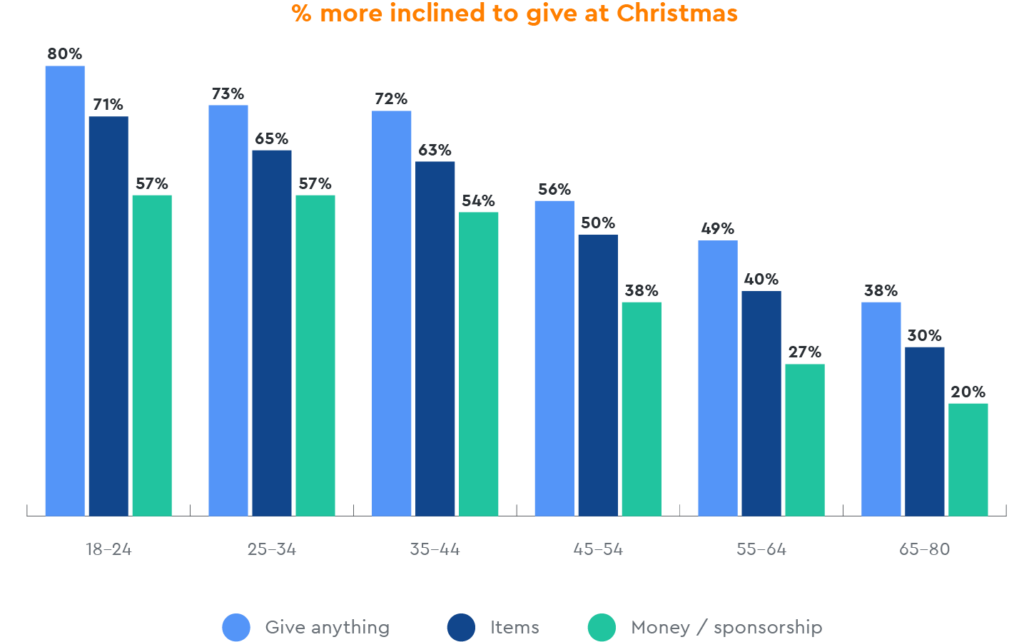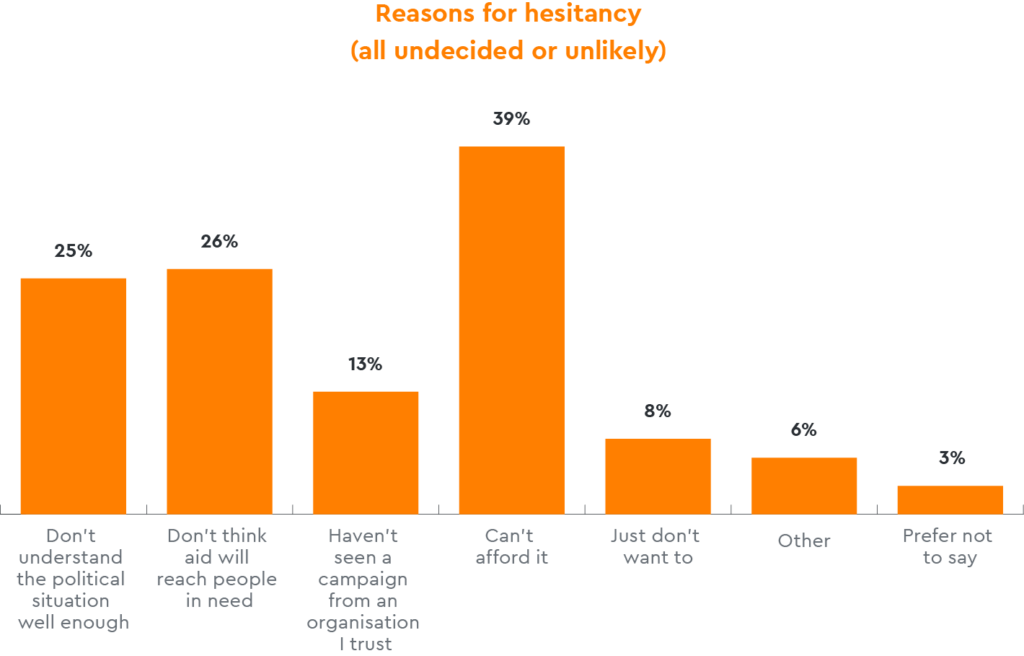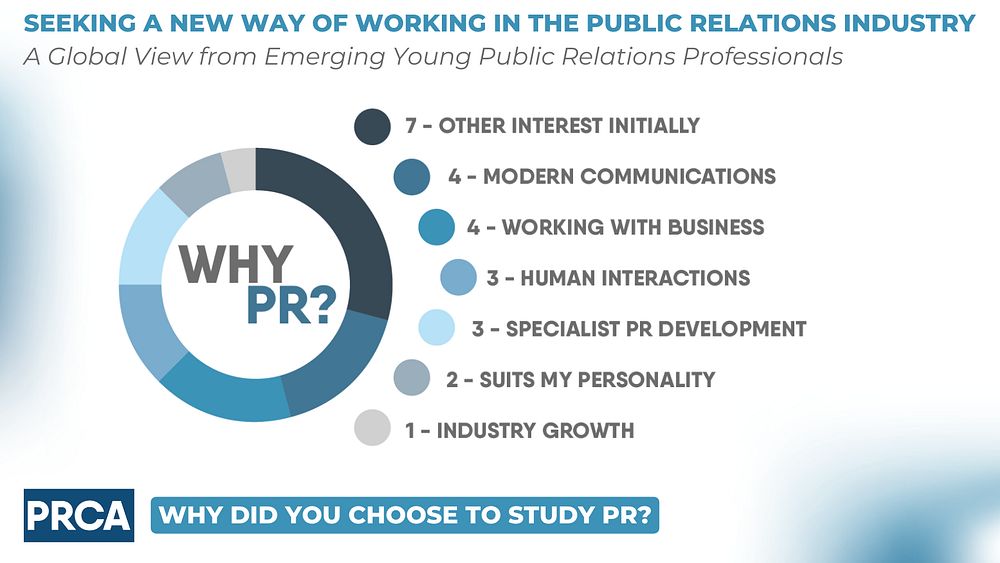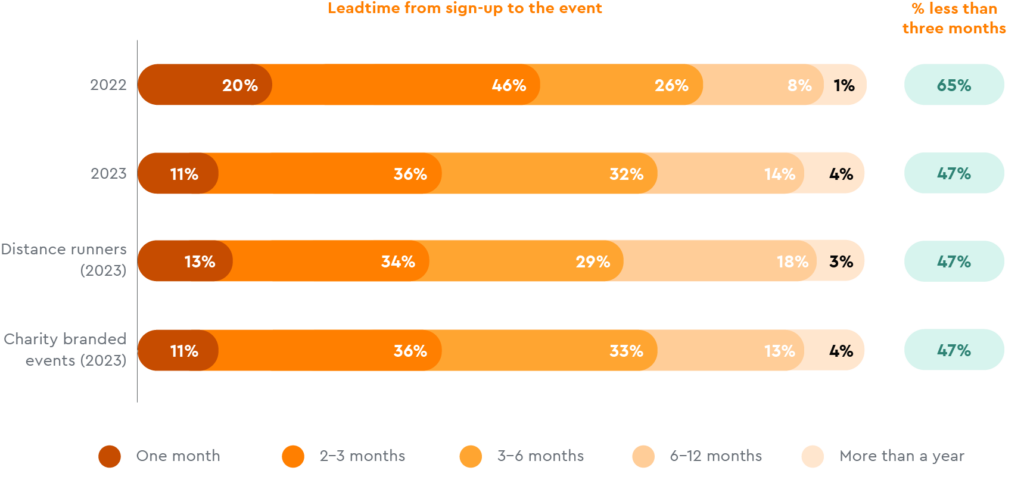As 2023 draws to a close, Enthuse wrap up their insights with Donor Pulse Winter. The report looks at how people plan to give at Christmas, the public�s donation intentions regarding Gaza and Israel, and the phenomenon of �inverse...
As 2023 draws to a close, Enthuse wrap up their insights with Donor Pulse Winter. The report looks at how people plan to give at Christmas, the public�s donation intentions regarding Gaza and Israel, and the phenomenon of �inverse giving�.
So what are some of the key findings?
Christmas giving
There is encouraging news for charities heading into the festive period, with more than seven in ten (72%) saying they are planning to donate over Christmas. This is a one percentage point increase on this time last year. Additionally, four fifths of 18-24 year olds say they are planning to donate to charity, either with money or items over the Christmas period. This drops to half (49%) for 55-64 year olds, showing the value of engaging younger donors.�
What�s more, there�s evidence to suggest people are actively looking to give to good causes over December. More than two fifths (43%) say they like to give at Christmas and are looking for chances to donate. And around a third (31%) donate in response to campaigns that ask for contributions.�
 Figure 1: Percentage who are more inclined to give over the Christmas period
Figure 1: Percentage who are more inclined to give over the Christmas period
There is a split in how some plan to support charities over Christmas. 42% are more likely to give money than at other times of the year. This is made up of either a straight donation (34%) or taking part in a sponsored event (26%). In contrast, 61% are more likely to donate items over the festive season, such as contributions to a food bank (43%) or gifts for children (42%). Charities will want to be clear about how their supporters can best aid their work by showing what they can achieve with financial contributions.�
The most popular cause areas the public is planning to support over Christmas are children�s charities (50%), homelessness (43%) and health (30%). Children�s charities are always popular at this time of year, jumping from around a fifth of people donating in the past two quarters to half for December. And homelessness charities the same, increasing from approximately 15% in the last 6 months to 43% for the festive season.�
Encouragingly, it�s not too late for good causes to benefit from the public�s festive generosity, even if they only have a limited plan in place. 47% of the public say they have responded to a Christmas appeal, and for those who say they are likely to give over the festive season, this rises to two thirds (67%). In terms of tactics � straightforward ones can still be effective � amongst those very likely to give at Christmas, one in ten have responded to email campaigns, and close to one in five to social media adverts.
�
�Christmas continues to be a generous time of year and it�s great news for charities that so many are actively looking to give over this period. The younger generation are much more inclined to give over December, and there�s still time for social media and email campaigns to make an impact, as well as more traditional methods like text messages and phone calls.�
Chester Mojay-Sinclare, CEO & Founder, EnthuseHumanitarian aid and charities in politics
�
The research indicates that charities supporting those impacted in Gaza and Israel may need to give clear messaging on why funds are needed and how they�ll be used in the area. 25% of people said they don�t understand the politics in the region and 26% were unsure the aid would reach the right place. However, 1 in 10 (9%) people have already given to provide humanitarian aid in Gaza or Israel, and a further 19% plan to.
 Figure 2: Reasons for hesitancy around donating to Gaza or Israel
Figure 2: Reasons for hesitancy around donating to Gaza or Israel
The data reveals a difference in giving by age when it comes to Gaza and support around Armistice Day. 18% of over 45s have donated to charities supporting the armed services and veterans, compared to 8% of under 45s. The picture is the opposite for Gaza, with 12% of under 45s having donated � double the 6% of over 45s who have given.
Domestically, charities seem to increasingly be drawn into political discussions as the UK ramps up to a General Election, but the public is divided on whether or not this is a good idea. Half of people want charities to campaign for change versus 44% who believe they should steer clear.�
That said, there is an acknowledgement that charities need support for their important work. Two thirds (65%) of those surveyed said they believed the Government should provide more funding for charities.�
Members of the public are also prepared to give to charities that have faced criticism in traditional or social media � a phenomenon known as �inverse giving�. Just under 1 in 7 (14%) have done so in the past 6 months, and this rises to 27% for Gen Z. The research also looks at the likelihood to take part in inverse giving by voting intention too. Liberal Democrat voters are the most likely to engage (27%), with Tory (17%), Labour (16%) and Green (16%) voters all having very similar participation levels, with Reform voters a bit further behind (8%).
Want to find out more?
There�s plenty more insights in the latest report and you can get your free copy of Donor Pulse Winter here.









